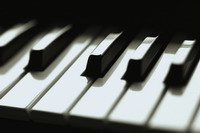Piano Sheets > Charlie Parker Sheet Music > Donna Lee (ver. 1) Piano Sheet
Donna Lee (ver. 1) by Charlie Parker - Piano Sheets and Free Sheet Music

About the Song
"Donna Lee" is a bebop jazz standard in A flat based on the chord changes of the traditional jazz standard "(Back Home Again in) Indiana".[1]
Miles Davis composed the tune, his first recorded composition, although authorship is often credited to saxophonist Charlie Parker.[2] Parker was credited on the original 78 rpm recordings, a mistake perpetuated through numerous reissues and causing early confusion.[2] The tune was copyrighted under Parker's name. It was named after bassist Curly Russell's daughter, Donna Lee Russell, a title assigned by producer Teddy Reig.
Jazz bassist Jaco Pastorius recorded his interpretation of the tune, a solo fretless electric bass rendition featuring Don Alias on congas, for his debut album Jaco Pastorius (1976). The tune is a particular favourite of avant-garde saxophonist Anthony Braxton, who has recorded it many times. It is also the last song ever recorded by.
Download this sheet!
About the Artist

Random article
How to enhance sight-reading for piano sheet music If you want to learn how to play, the piano in a live performance impromptu then you need to improve your sight-reading of sheet music. Chances are you will have to play music notes, which are unfamiliar.
Picking it at random
One of the best ways to enhance your sight-reading of piano notes is to pick any book randomly and start playing. Ideally, you want to start playing these musical notes from the first page and continue until you reach the very end. The trick is to be stern with yourself and not stop playing until you reach the last page of the sheet music.
(More...)
